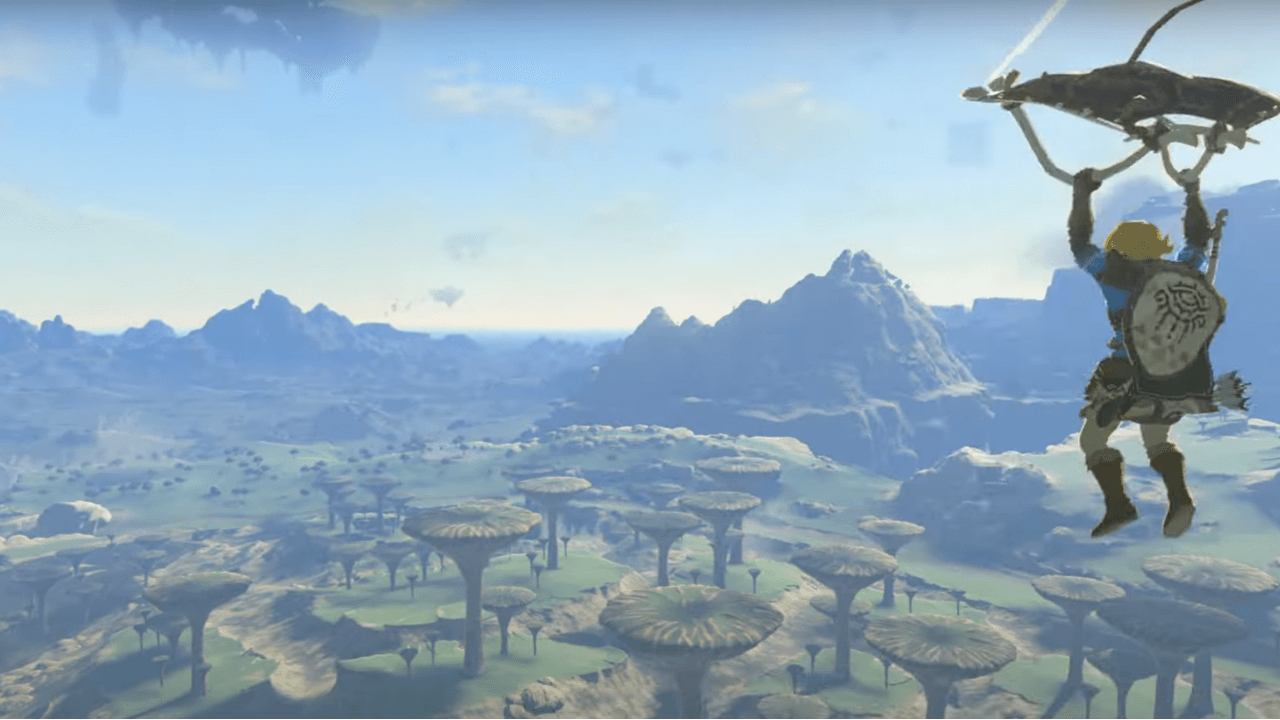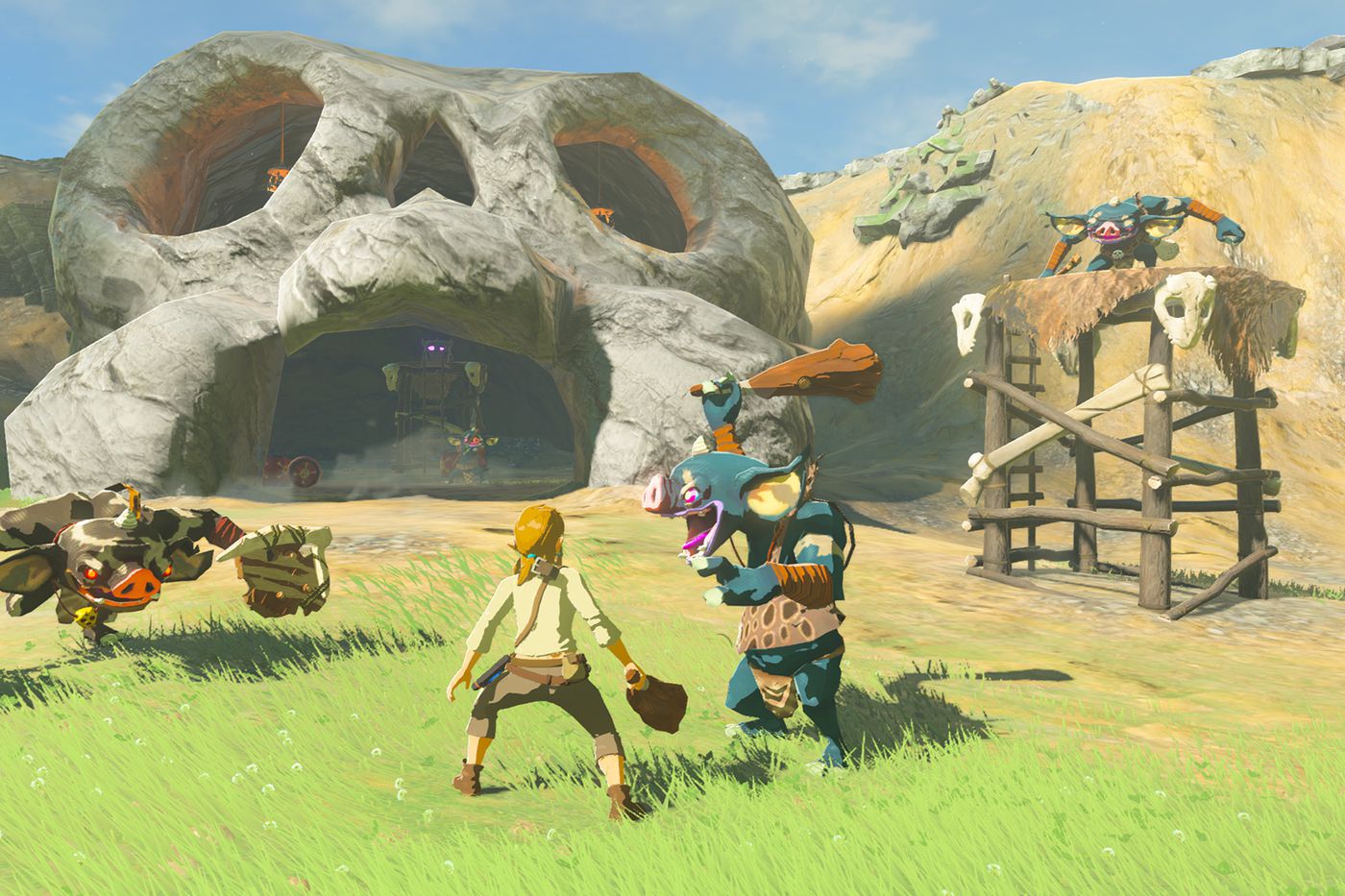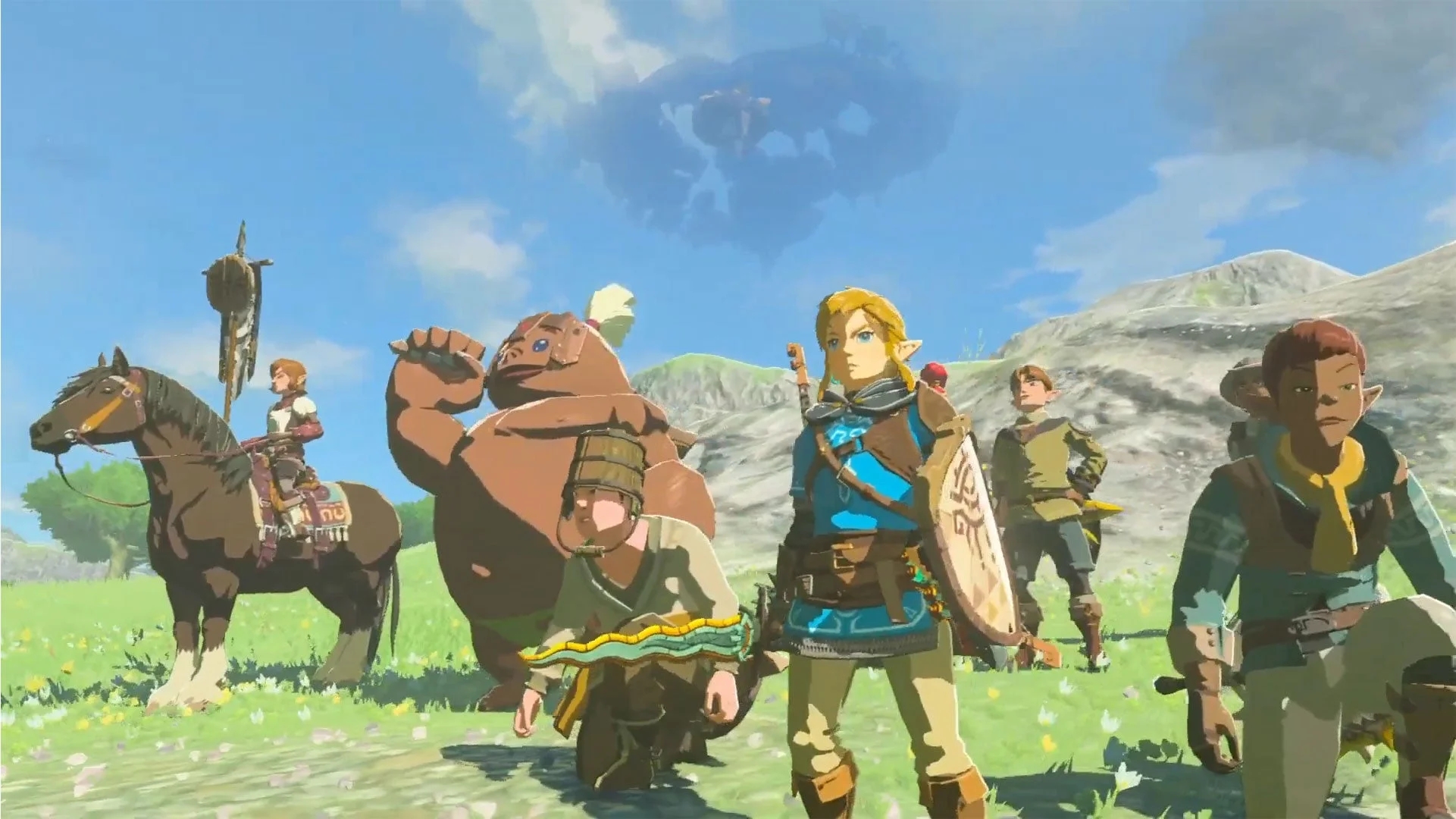Have you ever wondered why exploring Hyrule in Breath of the Wild and Tears of the Kingdom is so fun and rewarding? How did the developers create such an engaging and enormous world? After many hours in both games, I have broken down the wisdom of the Legend of Zelda into one concept. Three-point planning.

What is Three Point Planning?
Three-point planning is preparing three choices for the characters to engage with. There are always exceptions like at the beginning or end of an adventure. Yet, by giving the players choices you give them the power to create their own story.
From the PCs’ current location, what are three possible locations they can travel to? In the wilderness, this looks like monuments and fantastic locations discovered between destinations. TLoZ does this through the use of shrines, towers, NPCs, caves, enemy camps, etc. A D&D game might include an archway, an obelisk, or a stone circle that the PCs come across while traveling.
Think of a couple of small details that can give more flavor to the situation and location. How old is the space? What condition is it in? And what has changed over time? Small details described well can go a long way toward giving the world a sense of history.
Write down some ways the PCs can learn some secrets or clues about their current mission. What can they learn about their enemy? Do they have any reluctant allies? What events tie the PCs to the story? Other secrets can be about the history of the world. You never know when you need a nugget of info to reward a player for exploring your world.
How to Use It?
There are three general types of locations for this technique: near, middle, and far. Far locations are things like mountain ranges, large cities, and forests. Middle locations are found while traveling like caves, camps, or cabins. Near locations include what they can see from where they are. Examples include traveling merchants, a copse of trees, or a babbling brook.
Use active descriptions of locations so the PCs can take charge of their exploration. They should discover middle locations that are side quest length. No more than a full session, unless you’re into that. As they travel, far landmarks like the tall mountains can keep the characters on the right path.
Imagine the characters decide to follow the babbling brook instead of the road. It’s possible the travelers up ahead are bandits in disguise. As they follow the river they find an old cave that hides a shrine to an ancient deity. Continuing on, the ruins of an old castle come into view so PCs take some time to explore. Among the ruins, they find old magic and undead entities. Good thing the mountains to the east are visible so they can make sure they head in the right direction.
In each of these cases, the players will have plenty of ways to explore and learn about the world. Maybe they see interesting animals while following the brook. Maybe one of the PCs develops a connection with the lost goddess found at the cave shrine. Maybe later an NPC recognizes the sword found in the castle ruins. Learn what hooks the players the most and give it to them in pieces while they explore. Tie these bits of info to their character to get them even more hooked.
In cities, three-point planning creates diverse districts with unique landmarks and points of interest. This makes it easier for the players to explore by giving them options. Examples include a marketplace, a nobles’ neighborhood, or the docks if there is a port. Include three notable NPCs for each district that can act as quest-givers, allies, or adversaries. Give them their own personalities, goals, and secrets so the players find them engaging and intriguing.
Prepare three popular landmarks in the city that can serve as points of interest. Examples include an ancient church dedicated to a main deity, an old library with hints of forbidden knowledge, or a network of underground tunnels run by a thieves guild. These landmarks give the players meaningful choices as well as opportunities for engagement.

Why use it?
One reason to use three-point planning is to provide a structure for your session planning. By creating lists of three you will always have something interesting for the PCs to find and explore. These monuments and locations the PCs find are perfect places to include secrets and lore about your world. How are far-off events affecting day-to-day life? What civilizations rose and fell before the current ones in power? Were the current gods always favored? How old is the emperor king anyways? Find the answers by exploring the world three points at a time.
One difficulty of this might be that going backward acts as a cop-out to your planning. It shouldn’t be and don’t treat it like one. Retreating should always be an option when the PCs are stuck or encounter something too powerful. Being flexible and ready to adapt to your players’ decisions is an important skill for all game masters. Lean into your players’ choices and let them shape the story as they explore your fantastic world.
Be careful when presenting many choices, as you don’t want to give the players too many. This can cause them to waste time debating and analyzing each option. Incorporate time constraints to keep the story and the momentum moving forward. Even though you are planning three points ahead you don’t need to plan every single detail in advance. It’s ok, and expected, for you to leave room for improvisation and filling in gaps as needed at the table. Connect the players’ choices and the locations explored in a meaningful way. Do this by tying them into the main story, the characters, or the themes of your campaign.
If you notice a lack of player engagement use clear goals, motivations, and context. Communication with your players is important so that you can understand their preferences. This can help you short-term and long-term by planning what interests them and making sure that everyone at the table is having fun. The goal is to create an enjoyable experience for the players and the dungeon master.
Draw inspiration from the captivating world design of games like Legend of Zelda. Use three-point planning in your sessions to enhance the exploration and engagement of your players. Provide at least three choices for the characters to engage with. This will empower the players to shape their own stories while you are still prepared for their unpredictable chaos.
Embrace the power of exploration and discovery. Surprise your players with fantastic locations and ancient monuments. Unveil the wonders and secrets of your world. Three points at a time.

Good luck, I believe in you. See you in the future!
Related Posts
- 10 Questions To Ask During A Session for PC Worldbuilding
- Three Secret Questions for Combat Encounter Locations
- The Best Supplement For Your Session Zero (for any game system)
My Favorite Posts
- d100 Magical Trinkets and Relics
- My #1 Tip For New Dungeon Masters
- Three Secret Questions for Combat Encounter Locations
Recent Posts
- The Page of Names | Free Download
- Level Up Your Worldbuilding with These 3 Resources
- How I Run Initiative In Dungeons and Dragons 5e (and a free download!)
- d100 Fantastic TTRPGs and Where to Find Them
- Tactics for Engaging and Dynamic Combat Encounters
Support the Blog
- Support me on Ko-fi! Ko-fi.com/craigofinspiration
- Save 10% on your order from Dice Legion with code INSPIRAT10N at checkout
- As an Amazon Associate, I may earn from qualifying purchases https://amzn.to/4bg50tj
5 thoughts on “Three-Point Planning, or How to Session Prep Like a Zelda Game”